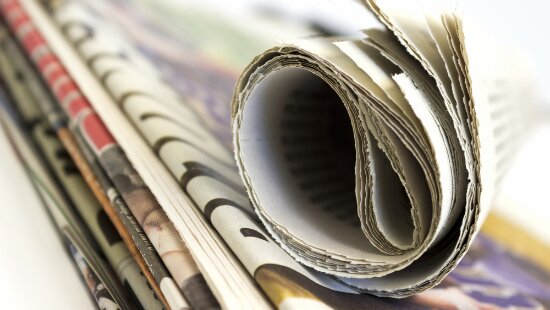A Consumer Council study on the bank interest rate movements in Hong Kong has found significant deviations from those of the US in recent years.
The study, which covered a 5-year period of first the interest rate down cycle and then the hike cycle between January 2001 and December 2005, noted significant differences in the pattern of recent interest rate adjustments by banks in Hong Kong from those of the US.
This is contrary to the general public impression that under the Linked Exchange Rate System, Hong Kong's interest rates will follow closely those in the US. But for various reasons, this may not always be the case.
According to the study, the deviations within the period studied have produced a positive interest rate differential between the average accumulative Hong Kong Best Lending Rate (BLR) and US Federal Funds Rate of 67 bps (basis points) or 0.67%.
That is: after the cumulative downward and upward adjustments, the BLR was 0.67% higher than that of the Fed Funds Rate, compared with the beginning of the period, January 2001.
The differential was derived from the interest rate adjustments by banks here in response to both the rise and down cycles of US interest rates during the period.
There have been suggestions of the possibility of a need to "catch up" on the current interest rate hike by raising the BLR further.
In light of the study findings, the Council is of the view those advocating for a raise will owe the public an explanation why such a move is necessary.
The study showed that during the current US interest rate hike cycle rising by a total of 325 bps or 3.25% (by the end of 2005), Hong Kong did not follow suit most of the times thereby rising to an average accumulative increase of only 292 bps or 2.92% in BLR, which is 33 bps or 0.33% less than that of the US.
However, this has not taken fully into account the interest rates down cycle during the same period when the average accumulative reduction of Hong Kong Best Lending Rate was 450 bps and the US interest rates 550 bps. The reduction in Hong Kong was, therefore, smaller by 100 bps or 1%.
The end result is an interest rate differential to the extent of 67 bps or 0.67%.
Secondly, the study also found a gap between the movements of the Best Lending Rate and the Hong Kong Dollar Savings Rate. During the current hike cycle, while the former rose by a total of 292 bps on average, the latter was up only by 260 bps, a differential of 32 bps or 0.32%, much to the chagrin of bank depositors.
The reverse is, however, true in a down cycle - the average Best Lending Rate was cut less than the Savings Rate by 24 bps or 0.24%.
The gap resulting from these discrepancies was widened by a total of 56 bps or 0.56%.
The Council has looked into the lingering public concern that banks are quick to raise but slow to reduce interest rates. This may have opposite effects on the depositors and the borrowers.
While this kind of asymmetrical timing in upward and downward rate adjustments may seem beneficial to depositors but cost increasing for borrowers, and hence neutralizing in net aggregate effect, one has to bear in mind the widened gap between the BLR and the Saving Rate noted above.
During the current hike cycle, it was found that the majority of the 19 local banks in the survey increased their BLR within one to two days after the US rate announcement.
Whereas during the down cycle, of the 12 banks that provided full data, majority took about three days - with a few taking an even longer adjustment time of beyond three days - to effect the rate changes.
According to the Hong Kong Association of Banks (HKAB), bank's loan and deposit ratio, market conditions, and business strategies are major factors causing time lag in interest rate adjustment. The longer time required to effect rate deduction might be partially due to the need for the HKAB to meet for discussion on interest rate change (when the Interest Rates Rules were still in force before July 2001; the HKAB would meet on Friday and any rate change would come into effect the following Monday).
The Council is also concerned over the confusion created by the existence of two tiers of P (Prime Rate or Best Lending Rate) to mortgage borrowers in their quest for the most competitive deal in the market.
As borne out in the study, lenders with a higher P (8% per annum at the time) were not necessarily less competitive than those with a lower P (7.75% per annum); some were in fact cheaper.
Consumers shopping for mortgage loans are advised to always ask the lender for the effective mortgage interest rate (in absolute terms), alongside with the level of the Prime Rate.
For example, in the case of a $1 million mortgage loan of 20-year repayment period, a mortgage rate of P-2.35 could turn out to be in absolute terms 5.4%, lower than a mortgage rate of P-2.5 which effectively was 5.5%.
According to the survey, the difference in interest savings between the most and the least competitive mortgage loans could reach up to 13%. So, do choose carefully the mortgage plan that will most suit your own individual need and budget.
Other important considerations in the choice of a mortgage loan include: cash rebate benefit that may require the borrowers to return partially or in full if they were to redeem their mortgaged property within the first three years; penalty charges for early redemption calculated on the original mortgage loan amount instead of the outstanding balance; late charge on overdue repayment ranging from 7.75% to 17% per annum.
The Consumer Council reserves all its right (including copyright) in respect of CHOICE Magazine and Online CHOICE ( https://echoice.consumer.org.hk/ ).



